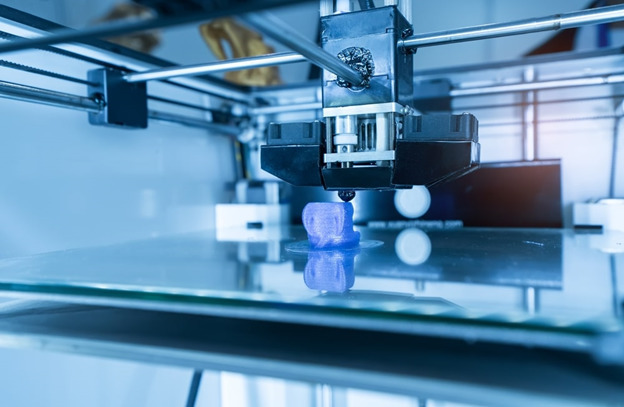Introduction
3D printing is a process that allows you to create objects from 3D computer models. It's also known as additive manufacturing or rapid prototyping, and it's been around since the 1980s.
The first 3D printer was developed by Chuck Hull in 1983, who patented his invention under the name "stereolithography." Today, there are many different types of 3D printers available on the market--some can print in plastic or metal; others use lasers to create objects layer by layer out of thin air!
Types of 3D Printing
There are several different types of 3D printing, each with their own advantages and disadvantages. The most common types include:
- Fused Deposition Modeling (FDM)
- Selective Laser Sintering (SLS)
- Stereolithography (SLA)
Industries Leveraging 3D Printing
3D printing is used in a variety of industries, including manufacturing, healthcare and education. The retail industry is also starting to see the benefits of additive manufacturing as it allows companies to customize products for their customers.
3D Printing in Manufacturing
3D printing is used in manufacturing for a variety of applications, including:
- Virtual Prototyping - Using 3D models to test the fit and function of new designs before they are manufactured. This allows manufacturers to make changes before they go into production, saving time and money on wasted materials.
- AR Maintenance - 3D printing can be used to create replacement parts for machines that are no longer in production or are difficult to find in the marketplace. This can be especially helpful when there is no equivalent part available from another manufacturer due to proprietary design features or technology (e.g., an older computer).
- Training - 3D printing can be used as a teaching tool so employees can learn how things work without having access to expensive equipment like CNC machines or lathes at their disposal every day at work! It also provides them with an opportunity outside classes/training sessions where they might not otherwise get hands-on experience working with these types of tools."
3D Printing in Healthcare
3D printing is also used to create virtual surgery simulations, which are used to train medical students and surgeons.
These simulations allow students to practice procedures before they actually perform them on real patients. They can also be used as a way for surgeons who have never performed a particular procedure before to learn how it should look when done correctly, or even just get some practice at getting comfortable with the tools they'll need for the job.
In addition to being able to practice surgical techniques, 3D printed models of organs can be used by doctors in order to better understand their patients' conditions and make better diagnoses based on what they see inside their bodies (or even outside). This type of knowledge helps improve patient care overall by providing more accurate information about how diseases affect people physiologically--and therefore how best treat those diseases through medicine or surgery."
3D Printing in Education
3D printing has the potential to create immersive learning environments, virtual field trips and interactive lessons.
3D printing in education is on the rise. Educators are using the technology to create immersive learning environments that engage students in ways they never imagined possible before. For example, teachers can use 3D printers to print objects that are part of a lesson plan or they can create their own models for students to examine up close in order to better understand how something works.
3D Printing in Retail
3D printing is also making its way into retail.
- Virtual storefronts: 3D printed products can be placed on shelves and sold online, allowing customers to browse and purchase items that they might not be able to find in their local stores.
- Product demos: Retailers can create 3D printed models of their products, which they can then use as showpieces or give away as free samples at trade shows and conventions. This helps potential customers visualize what the product looks like before buying it online (or even better--in person).
- AR shopping apps: Augmented Reality technology allows users to see how clothes would fit them before purchasing them online or in person by using their smartphone camera as a virtual mirror
Challenges of 3D Printing
- Cost
3D printing is still a relatively new technology, which means that the cost of printers and materials is higher than it will be in the future. This can make 3D printing prohibitively expensive for many people who would otherwise benefit from it (such as those with disabilities). As more companies enter the market and competition increases, prices are expected to drop significantly over time.
Conclusion
3D printing is a powerful tool, but it's not always easy to use. The best practices for creating immersive content are simple: get started with templates, use the right materials and settings for your project, and pay attention to detail.
3D printing can be an intimidating process for designers who aren't familiar with CAD software or 3D modeling techniques. However, there are many options available today that make it easier than ever before--including templates! Templates allow users to create their own designs without having any experience in 3D modeling software (like AutoCAD). They come preloaded with common shapes like spheres or cubes that can be modified by dragging them around on screen; once you're happy with how everything looks just hit "print" and voila--you've got yourself a new object ready for assembly!


